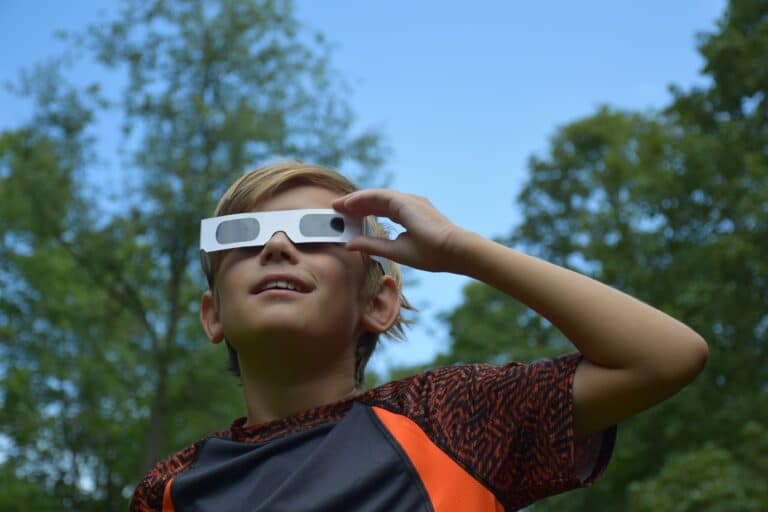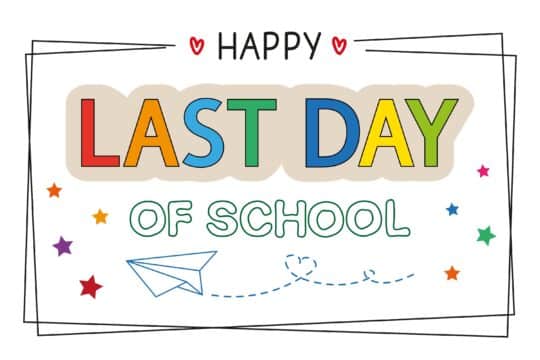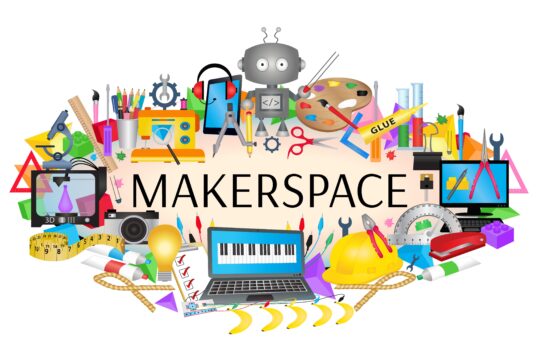A total solar eclipse is coming this April 2024. This rare, astrological event is a perfect classroom learning opportunity, offering a way to ignite students’ curiosity and stimulate their interest in science and the universe. Utilize this impending eclipse as an opportunity to spark a heightened interest in scientific exploration and create an enriching learning experience filled with exciting, interactive activities.
What is a Solar Eclipse?
A solar eclipse occurs when the moon is in a position that is directly between the Earth and the sun. This alignment causes the Earth’s shadow to temporarily dim the sun’s brightness from us, turning the day into night.
Date and Visibility
On Monday, April 8, 2024, the total eclipse will move across North America, Mexico, the United States, and Canada. According to NASA, if you live in the United States the path of the eclipse will travel through, “Oklahoma, Arkansas, Missouri, Illinois, Kentucky, Indiana, Ohio, Pennsylvania, New York, Vermont, New Hampshire, and Maine.” These states will experience a total eclipse and a partial eclipse before and after.
Here is an example from NASA’s website if you were viewing from Buffalo, New York:
Partial begins: 2:04 p.m. EDT
Totality begins: 3:18 p.m. EDT
Maximum: 3:20 p.m. EDT
Totality ends: 3:22 p.m. EDT
Partial ends: 4:32 p.m. EDT
Classroom Activities
The solar eclipse is an excellent teaching moment, not just in science class. To further enrich students’ knowledge about the upcoming solar eclipse, consider these classroom activities that cover a broad range of curriculum topics.
Astronomy
Go back to the basics and begin by explaining or having students research what a solar eclipse is. Discuss the positions of the Earth, sun, and moon and how they align to create a solar eclipse. Discuss the different types of eclipses such as the total, partial, and annual, and have students research if the eclipse is visible where you live.
If you are in the path of totality or partial totality, organize a viewing event for your school. Be sure to discuss safety measures such as eclipse viewing glasses. If you are not in the viewing path, you can have students view a live stream from NASA on the day of the event.
Environmental Science
Solar eclipses affect the environment and animal behavior. The sudden shift of daylight to darkness can change temperature and animal behavior. For example, the temperature dropped 15 degrees Fahrenheit during the 2017 solar eclipse. Also, bats have been reported to be active during the day, and family pets have been seen displaying confusion or restlessness.
Ask students to observe these environmental and animal responses both before, during, and after the eclipse. After monitoring these shifts, have students explore the connections they’ve found. This will help deepen students’ understanding of the interconnectedness of the earth and its species and systems.
Mathematics
It takes mathematics to predict a solar eclipse. One of the concepts used to predict an eclipse is the Saros Cycle. Challenge students to predict when and where the next solar eclipse will happen by using this method. Discuss the geometry that’s involved in eclipse path such as the angles and different types of eclipses, this will help students understand the geometric principles.
You can also use the solar eclipse to teach students about measuring time and shadows. Students can observe and measure the shadows before, during, and after the eclipse. Then, students can compare their findings and better understand proportional reasoning.
Geography
The path of totality will span across the United States from Texas to Maine. Have students examine a map of the United States and answer specific questions on how different locations within the United States will experience the solar eclipse. You can modify NASA’s online lesson plan for grades sixth through eighth for younger or older students. Or, you can have students map out the path of totality themselves and research which countries and regions will experience the solar eclipse. This lesson can then lead to a history lesson about how other cultures view the eclipse.
English
The 2024 solar eclipse offers an opportunity for students to have a deeper appreciation of the solar event through creative writing and literature. Inspired by the solar eclipse students can create a poem or create a story about themselves or a character witnessing the eclipse. They can write a blog post, a journal entry, or even a persuasive essay about observing this celestial event. By integrating the solar eclipse into your English activities, you are encouraging creative and critical thinking skills and helping students make sense of this rare event.
Art
Unlock your students’ creativity and let the eclipse inspire young artists. Encourage students to explore their creative side by drawing, painting, creating digital art, or photographing the solar eclipse. If photographing, be sure to discuss the dangers of looking directly into an eclipse and how to capture the shot innovatively through the use of solar filters. Any artistic form of creative expression will only enhance students’ understanding of the solar eclipse and help to leave a lasting impact on this astonishing phenomenon.
The solar eclipse creates a unique learning opportunity where students can directly engage in their wonderment of the universe. The next solar eclipse won’t cross the United States again until 2044, so make this special event a focal point of learning and partake in these classroom activities because this experience is a rare phenomenon that will help to create a deeper understanding of the universe and beyond.




